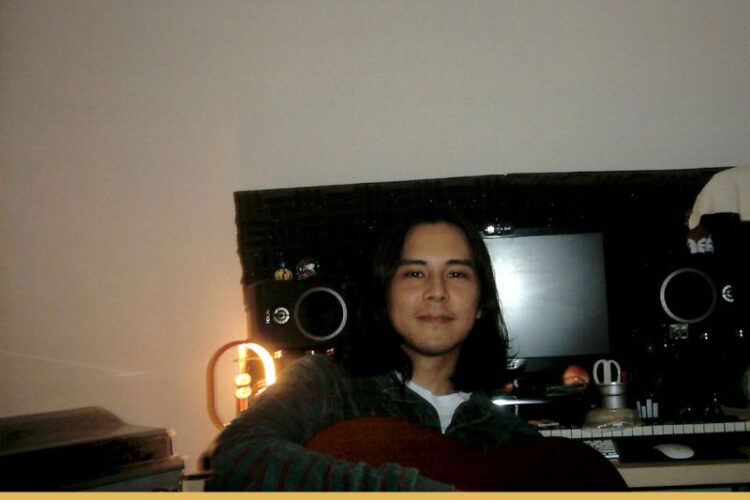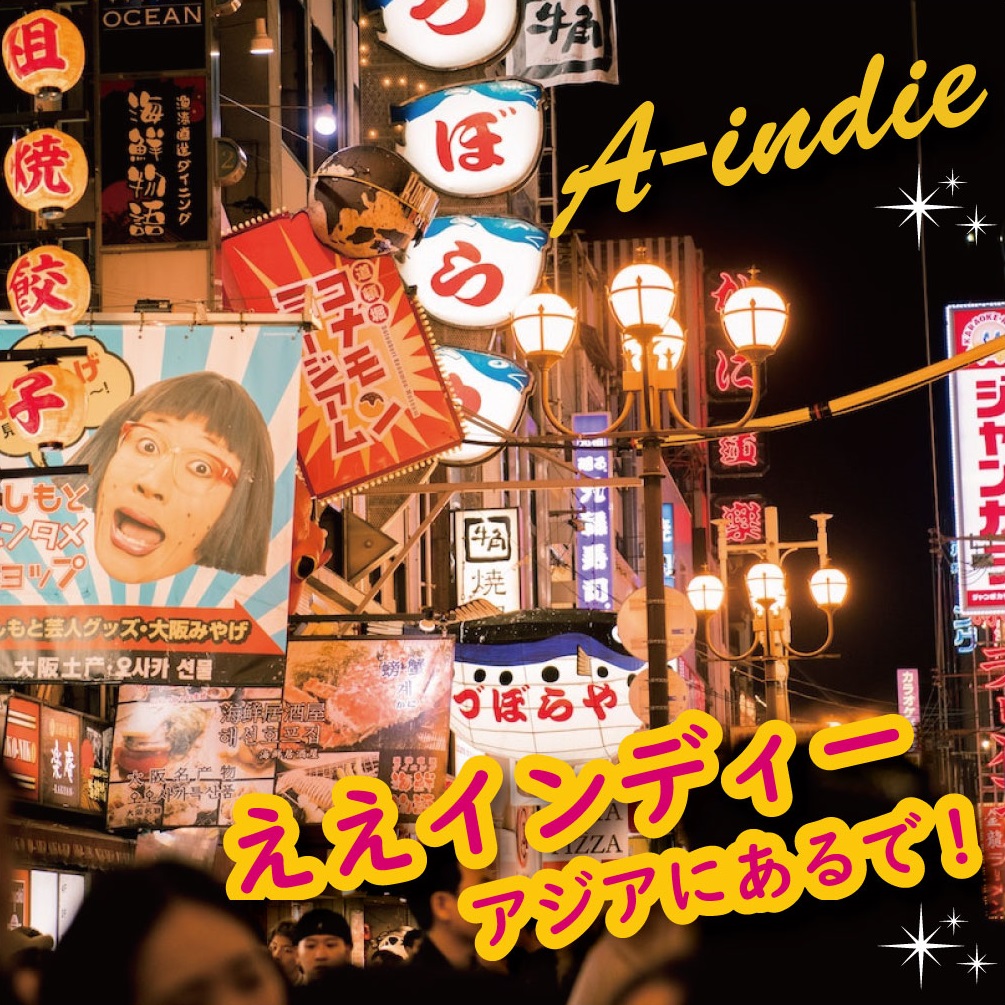Last Updated on 2025-11-25 by a-indie
About the Songs
Advance Singles “Car” and “Wonder”
—Maririn: For advance releases, following the first single “Car,” the second single “Wonder” was just released. Are there guest vocalists on this album? I heard what sounded like a female voice, but there was no credit.
Kohei Kamoto: There are no guest vocalists. The parts that sound like a female voice are also me singing. That’s pitch-edited from my vocals. Other than Suzuken adding a bit of percussion, it’s just me and Koda.
—Maririn: I see. Between the advance releases “Car” and “Wonder,” “Car” leans more toward band sound while “Wonder” has more of a quiet bedroom music impression. After releasing each, what was the response like?
Kohei Kamoto: Everyone said “I listened” and I’m happy. I thought it would start more quietly, but I heard from friends around me and DYGL fans that they listened, which was great.
Commitment to Playing Everything Yourself
—Maririn: You performed almost all instruments yourself, but the third track had brass instruments, right?
Kohei Kamoto: “Wonder,” yes. The brass too, it’s really just me, and I produced it almost without using studios, so there are many parts where “I really wanted to do it this way.” But looking back after finishing, I often think “actually, it was good I didn’t do that.” Like the female voice earlier, we talked about having someone else sing it, but ultimately “this works as is.” For brass too, what was originally sampling I reprogrammed on computer and edited, and again “rather than having someone actually play it, this is fine,” so I programmed it myself. I didn’t actually play it.
Struggles and Joys of Solo Creation
—Maririn: Including artwork, do you have particular commitments about handling everything yourself, or conversely, what was difficult?
Kohei Kamoto: I don’t have special commitments, but doing it alone proceeds more smoothly. If someone says something midway about something I’m creating from zero, I’m the type to sway in that direction. Being able to keep creating without anyone saying anything means smooth progress, but conversely there are difficulties. Nobody says anything, and I have infinite time, so how much to obsess over details, or there’s no one to say “finishing roughly is fine too.” Of course Koda was there, but basically it’s just me, so that was a “battle with myself.” But doing DYGL and other bands while being able to produce alone at home was really good, I think.
—Maririn: In the production, what work left the strongest impression?
Kohei Kamoto: Making demos alone was tough, and I’d think “I hate this song.” But basically I’d take finished demos to Koda’s house, and recently there’s not much “commuting” to somewhere, so I felt like I was commuting to Koda’s house, and that became a really good memory.
—Maririn: Was recording also at Koda-san’s home?
Kohei Kamoto: No, at Koda’s house we recorded his keyboard playing, but only drums we recorded at hmc’s studio where we asked them to do mastering. Guitar, bass, vocals—I recorded everything at my own house.
Album Structure and Concept
Presence of Instrumental Tracks
—Maririn: Of the album’s 10 tracks, 3 are instrumentals without lyrics. Is this connected to Koda-san working on film music?
Kohei Kamoto: Koda is actually the type to say “sing,” and early on he said “it’s better to have lots of singing tracks.” He’d say things like “try adding drums and vocals” to demos that didn’t have vocals. So tracks without vocals might be closer to the music I originally intended to make. Oh, but the Western-style track (“Space Cowboy”)—Koda said “I want a ‘Western’ kind of song,” so I made that. I hadn’t considered it, but I think he was viewing it as one album, one work, and requested it.
“Space Cowboy” and the Space Theme
—Maririn: From the title “Space Cowboy,” I thought of the Clint Eastwood movie (“Space Cowboys”).
Kohei Kamoto: There’s no particular reference to a specific movie or song. Initially I had the title “Western,” but that felt too literal. I wondered what to do, but since the album concept had “space,” I thought “Space Cowboy” works. As for the title’s meaning, I think listeners can interpret it.
—Maririn: “Space Cowboy” was what I was most looking forward to hearing when I saw the track list. Where did the album concept of “space” come from?
Kohei Kamoto: When first talking with Koda, he found reference films, among them this B-movie called “Mac” (original title: Mac and Me). When making demos, we both talked about how this fit the overall image. We watched the movie together all the way through, and it’s completely like an “E.T.” ripoff (laughs).
—Maririn: A film riding on “E.T.”‘s coattails (laughs).
Kohei Kamoto: Something that definitely wouldn’t be allowed today (laughs). But that sampling, or rather homage, was interesting. The spacey feel with aliens appearing was good. I originally like hard rock but I also like synthesizers. Since synthesizers have a spacey quality, I brought the “space” theme from there. Another thing, something like “The Flying Picture Book” (exact title unclear), a traveling picture book was also a reference, and from that fantasy aspect too came the image of spacey sounds.
“Piano” as an Experimental Interlude
—Maririn: Space and bedroom music fit together well. “Piano” was the most unpredictable track on the album for me.
Kohei Kamoto: That’s an interlude. I was thinking about the whole album, so I wanted to insert a disruptive track midway. Originally it was a track with piano being played normally. We were talking about wanting to run the whole album through tape at the end, and that wasn’t going well, but at that time, accidentally the sound from working while using the tape machine (manipulating recording speed, etc.) was really good. When I ran normally recorded material through the tape machine, it went all warped, which was interesting, so I used that idea.
—Maririn: So originally it was completely different.
Kohei Kamoto: Originally, the piano phrase you can still faintly hear continued throughout. I warped that all up with the tape machine.
Listening to the Album as a Whole
Completeness as One Work
—Maririn: Right now you can listen to a few songs through advance releases, but this album is intended to be heard from track 1 all the way through, right?
Kohei Kamoto: Yes. I myself have increasingly listened to one good song via streaming or listened on shuffle, and become unable to listen all the way through. Of course it’s fine for people to listen that way, but if making an album, I wanted to do something complete as one work.
—Maririn: This diverges a bit, but I’d always been on Spotify Premium, and the other day I forgot to renew and was on normal for a while. On normal you can’t choose song order, right? Isn’t that really problematic for the music provider’s side?
Kohei Kamoto: Really? I’ve been on Apple Music for a while and don’t know Spotify’s specifications, but not being able to choose song order is inconvenient.




 - is a music media platform run by BELONG, a Japanese music organization. We publish music articles with a focus on indie music.
- is a music media platform run by BELONG, a Japanese music organization. We publish music articles with a focus on indie music.
[…] English article here 🔗 English […]